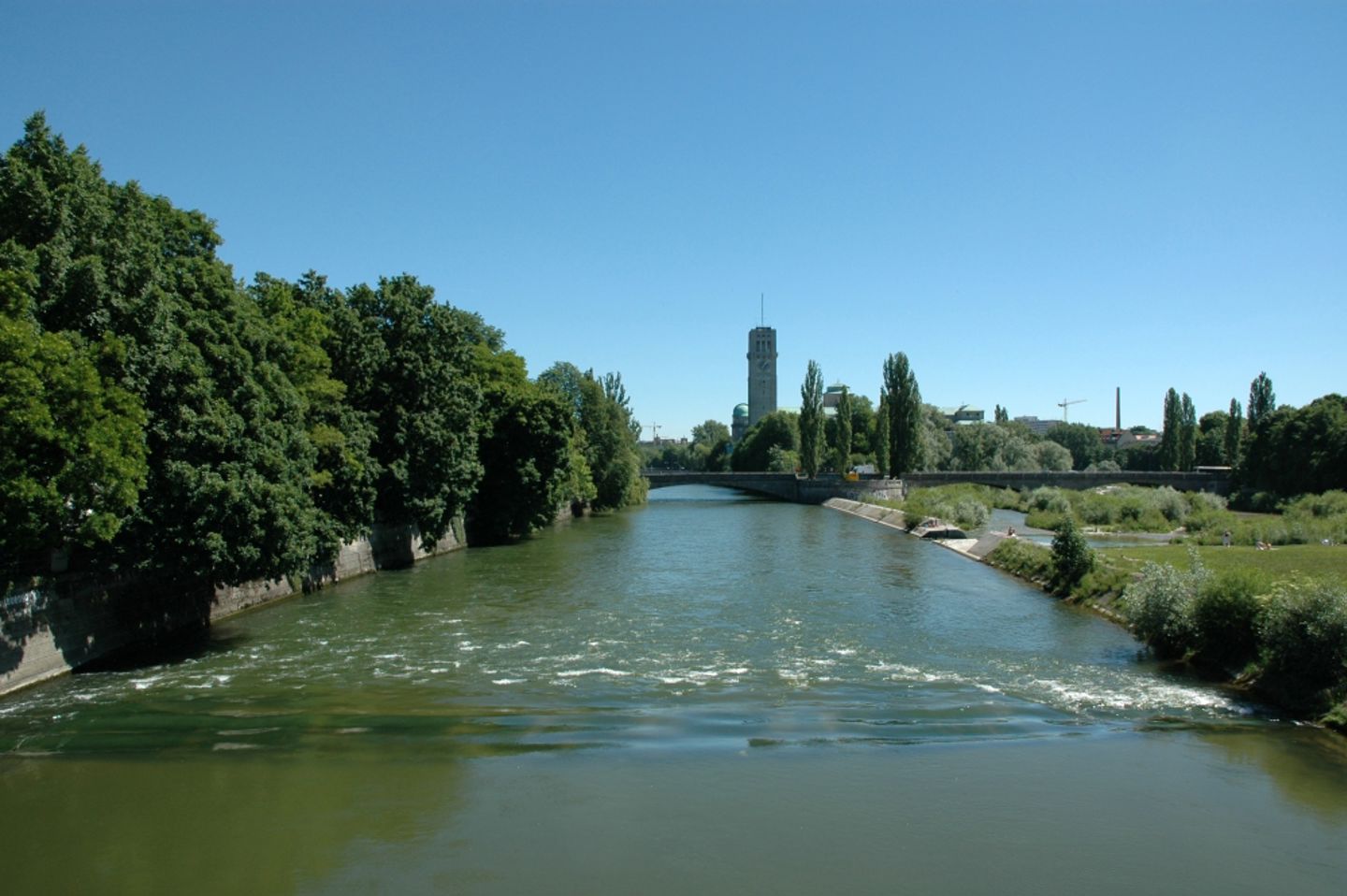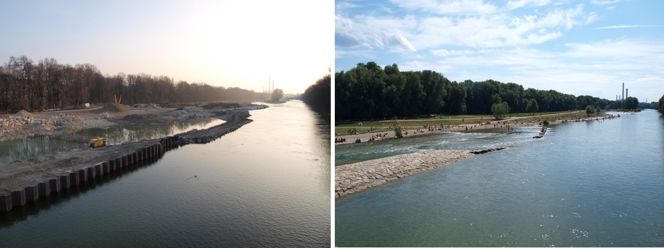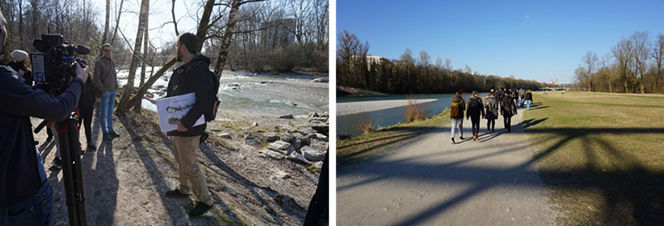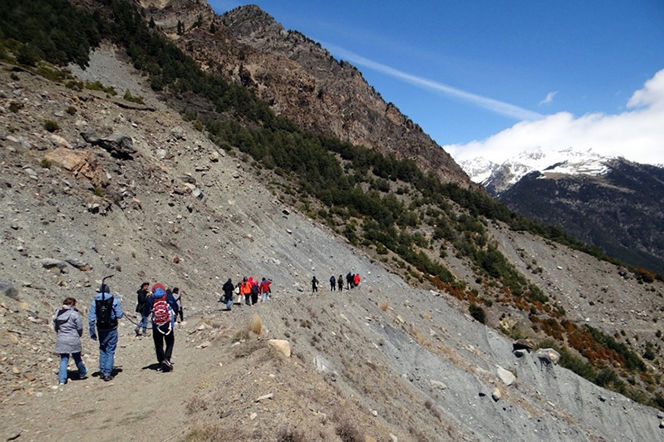Isar River Basin, Germany

The Isar river is one of the principal affluents of the Danube, sourced in the Alps, and crosses the Bavarian capital Munich. Heavy rain events in the Alps in 1999, 2005, and 2013 led to significant floods.
For example, in June 2013, flood damage costs amounted to € 1.3 billion in Bavaria, Germany (BSUV, 2014). To limit the flood risk to housing areas, hydraulic regulation began, and the riverbed was canalized. However, grey infrastructure caused accelerated river incisions, which resulted in significant risks to biodiversity and cultural buildings such as bridges.
Therefore, during the last two decades, the state of Bavaria, in cooperation with city governments and other relevant stakeholders, implemented a wide range of local NBSs, e.g., restoration measures. These succeeded in decreasing flood risks and the river incision rate, ameliorating recreational quality, and improving the ecological status of the river course and its floodplains according to the Water Framework Directive (Directive 2000/60/EC) as well as Natura 2000 (Ballon et al., 2005), achieving the first German award for river development (‘Gewässerentwicklungspreis’) in 2007.
The post-analysis of this concept case provides a good practice framework of a successfully implemented flood risk management plan and related river restoration, enabling the identification of the key factors relevant to the PHUSICOS case study sites. Efforts to reduce hydro-meteorological risks by NBSs continue, as, for example, there is increasing awareness of the necessity of measures on a broader landscape scale, such as improved forest management practices in the upstream mountain catchment areas.

The Isar river during (left) and after (right) the hydro-morphological restoration. Today’s near-natural landscape raises awareness on the usefulness of NBSs both for DRR and recreational purposes (Pictures: Zingraff-Hamed 2011 and 2015).
A number of activities have been carried out related to the Isar Concept Case. The main activities have been:
- A ‘Look-and-Learn’ visit for the PHUSICOS consortium in March 2019, which included visiting sites along the Isar, visit to the hydraulic laboratory facilities where modelling studies of the interventions were done, as well as workshops with key stakeholders in the Isar Project. The role of close collaboration with all stakeholder groups was emphasized as a key factor of success, and the best way of avoiding potential conflicts. A film on the Isar restauration was made after the visit.
- A webinar in September 2020, which replaced a planned summer school (due to the Covid pandemic). 19 international students participated in the one-week webinar, which comprised virtual visits to several of the PHUSICOS sites, combined with lectures and discussions on NBS.
- An 8-days physical spring school in April 2022, with 15 international students, representing all continents. The spring school comprised field studies at the Isar and its tributaries in Germany, and at the PHUSICOS demonstrator case site in the Pyrenees, visiting all the locations where NBS interventions were planned or under implementation. A film is under production from the spring school.
- A range of various outreach,- support,- and dissemination activities, including support to other PHUSICOS WPs, production of NBS interventions in the Alps and the Pyrenees, support to other projects, production of podcast and films, supervision of MSc and PhD students, as well as presenting at international and national conferences and workshops and publishing in scientific journals.

The PHUSICOS group during the ‘look-and-learn’ visit along the Isar in March 2019.

How the participants of the 2020 webinar presented themselves.arn’ visit along the Isar in March 2019.

Participants of the PHUSICOS 2020 spring school visit the Erill-la-Vall demonstrator case site. The film crew is in the back. (Photo: Aude Zingraff-Hamed).
Participants of the PHUSICOS 2020 spring school visit the Erill-la-Vall demonstrator case site. The film crew is in the back. (Photo: Aude Zingraff-Hamed).
See video from the ISAR River Concept Case.
=====================================================
Contact person:
Aude Zingraff-Hamed, aude.zingraff-hamed@tum.de